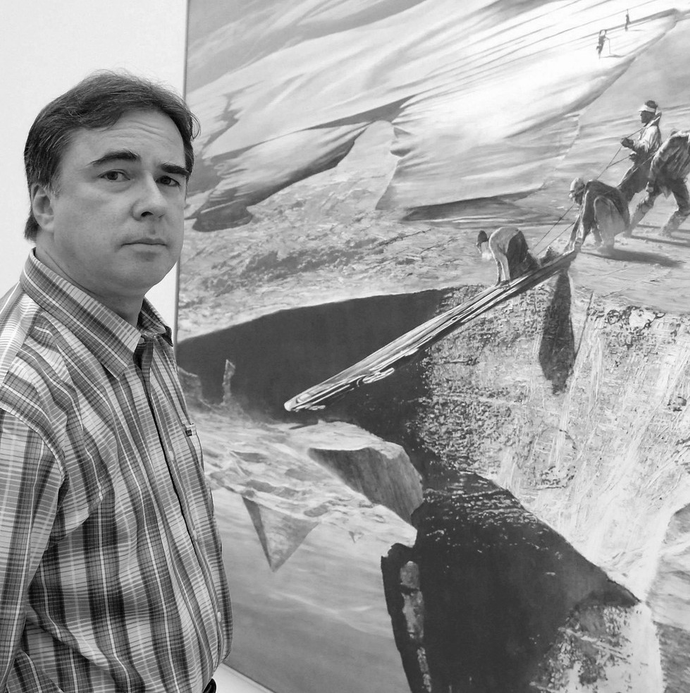
Mark Tansey
Mark Tansey's paintings are visual adventures delving into the nature of perception, meaning, and subjectivity. He merges figurative and landscape painting traditions, layering them with historical, literary, philosophical, and mathematical references. Through distortions of perspective and scale, along with technical skill, Tansey challenges viewers' understanding of images.
Biography of Mark Tansey
Raised in San Jose, California, amidst the vibrant cultural landscape, Mark Tansey's immersion in the world of art began from an early age, thanks to his father's expertise as an art historian. During his teenage years, while attending Saturday art classes at the San Francisco Art Institute, he eagerly frequented the local art museum.
Mark Tansey started his art education at the Art Center College of Design in Los Angeles in 1969, where he began delving into the appropriation of mass media. This foreshadowed the later work of the Pictures Generation in the 1980s, which would explore similar themes.
In 1974, Tansey relocated to New York and joined the graduate program at Hunter College. Spending an additional four years at Hunter College in New York City and working as an assistant at the San Jose State University Gallery, Tansey delved deeper into art history.
The artist divides his time between New York and Portsmouth, Rhode Island, creating approximately one painting every two years. He operates out of his two-story studio, where he meticulously develops his paintings through multiple stages of sketches and drawings before finalizing each piece.
Mark Tansey's astute work is featured in several prominent collections, such as the Smithsonian American Art Museum in Washington, the Modern Art Museum in Fort Worth, and the Broad Art Foundation in Los Angeles. With numerous solo and group exhibitions to his credit, Tansey has effectively carried forward his family's artistic legacy, establishing himself as an artist of exceptional quality and significance.
Mark Tansey's Art Style
Introduced to historical art by his parents, Mark Tansey's paintings often exude an old-fashioned aesthetic. Many of his works are monochromatic, created by applying a layer of monochrome pigment to the canvas surface. This textured medium allows for easy manipulation, enabling Tansey to craft remarkable paintings. However, the pigment dries quickly, giving the artist a mere six-hour window to complete the process. To weave deep, detailed, and meaningful narratives, Tansey employs a technique akin to fresco painters, meticulously working on individual segments of the painting to meet the time constraints.
Tansey's paintings encompass a range of subjects, from everyday occurrences to historical events, often set in natural environments. What distinguishes Tansey in his artistic approach is his engagement with viewers. Influenced by René Magritte's eight methods, Tansey sought to introduce contradictions into his pieces, challenging viewers with complex narratives rather than simple visual cues. He achieves this by incorporating elements into an otherwise straightforward narrative that seem out of place, creating a sophisticated conflict between visually fluid portrayals and contextually incoherent stories.
Years:
Born in 1949
Country:
United States of America, San Jose, California